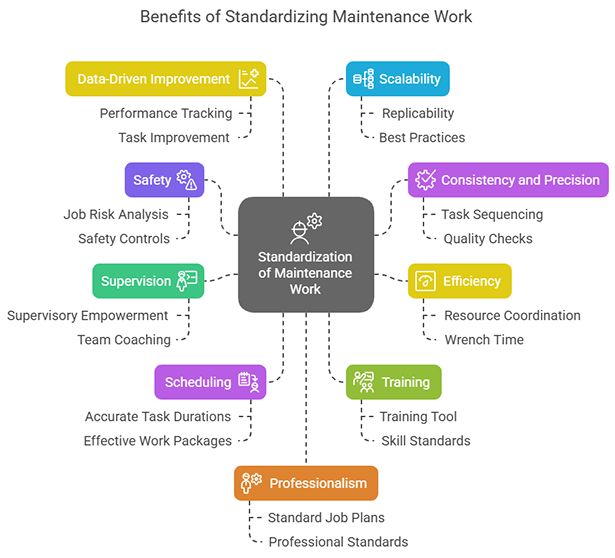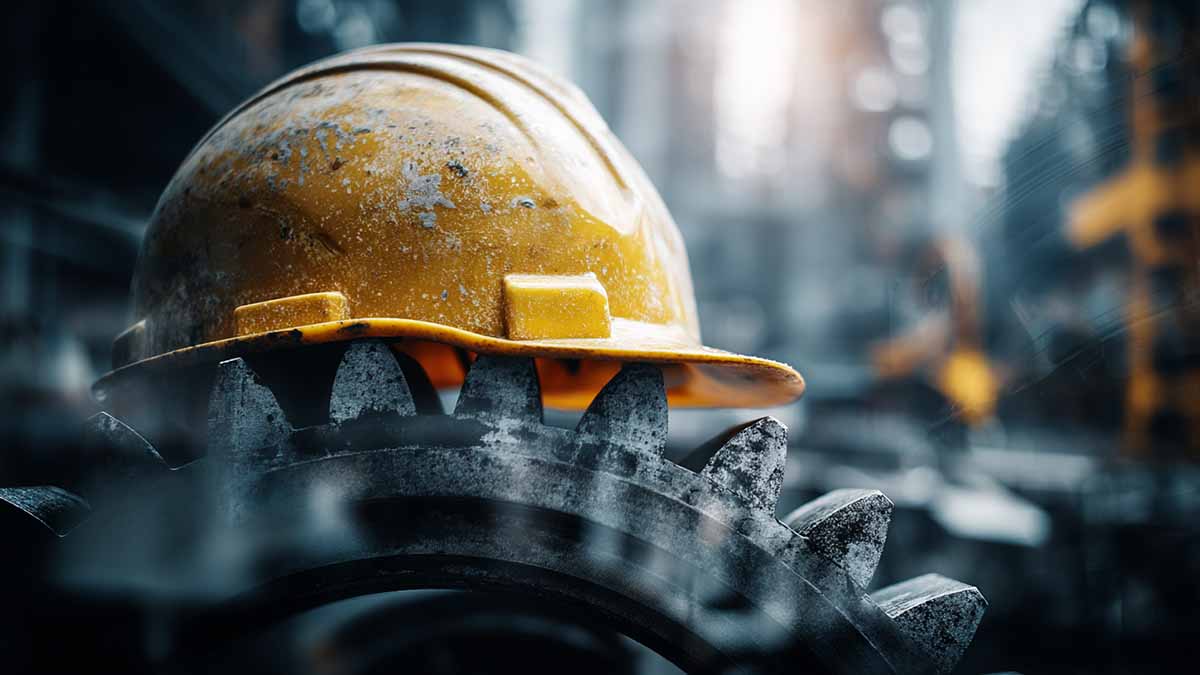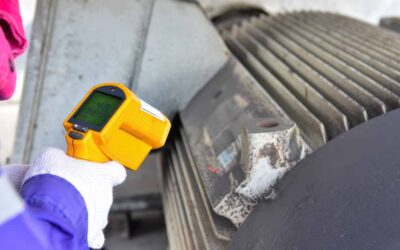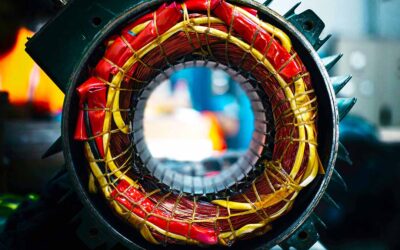Maintenance is repeatable. We change the same filters, replace the same crusher liners, torque the same bolts, change the same drive motors, lubricate the same points, splice the same conveyor belts, align the same shafts, etc., again and again. When work is repeatable, it should be standardized. Standardizing leverages that repeatability to drive safety, efficiency, and quality.
And yet, too often, we leave crews to improvise. We plan work with vague scope, missing parts, or unclear task sequences. When that happens, crew supervisors are forced to do everything but supervise. They chase materials, rewrite the job in the field, negotiate permits, and firefight problems that should’ve been solved days earlier. That’s not leadership. It’s crisis management.
Repeatable work demands repeatable plans. Without standardization, we’re not managing—we’re improvising.
If we want high reliability – if we want a disciplined, professional maintenance organization—then we must treat standard job plans as foundational. In High-Reliability Organizations (HROs), standardization is a core discipline. It’s how they lock in safe, correct, repeatable execution in complex, high-risk environments. The same should apply to us.
Your challenge: standardize 100% of your time/usage-based and >80% of your condition-based maintenance work to leverage the repeatable nature of maintenance work.

So here it is – my top 10 reasons to standardize maintenance work, backed by experience and aligned with the principles of HROs.
1. Standardization Anchors Safety
Every standard job plan must include a Job Risk Analysis (JRA) and list the critical safety controls required. That includes lockout/tagout steps, PPE, confined space entry, fall protection, and anything else the job demands.
A JRA and critical controls don’t replace heads-up situational awareness, but they give your crews a great head start. You can’t expect tradespeople to guess what’s safe. Spell it out. Safety by design, not by memory.
2. It Delivers Consistency and Precision
Precision maintenance starts with a clear, step-by-step task list that defines the sequence of work, the torque specs, the alignment targets, and the quality checks. Standard job plans prevent variation, which is the enemy of reliability.
Don’t let “Joe does it one way, Mary does it another” be your reality. Write it down. Lock it in. Repeat it.
3. It Unlocks Wrench Time
Poor planning is the single biggest drain on wrench time. Crews waste time searching for parts, asking for clarification, or figuring out what to do next.
Good job plans restore productive time. I’ve seen wrench time jump from under 25% to over 50% just by implementing standard job plans with proper pre-kitting and clear task sequences. That effectively doubles the size of your crew.
4. It Supports Efficient Resource Coordination
When you standardize, you make it possible to coordinate people, parts, and tools in advance. That includes:
- Bills of materials (BOMs) with stock codes and quantities
- Tools required, including lifting/rigging gear
- Craft types and hours needed
- Permits and pre-work, like lockout and access prep
Suddenly, planners, coordinators, and supervisors are working from the same playbook. No more guesswork.
5. It Empowers Supervisors to Actually Supervise
I say this often: Poor planning forces crew supervisors to do everything but supervise.
When job plans are vague or incomplete, supervisors spend their day chasing solutions. When job plans are standardized and complete, supervisors can walk the floor, coach their team, reinforce safety, and verify quality.
In short, they can lead.
6. It Drives Better Scheduling and Work Packaging
Standard plans give schedulers accurate task durations, skill requirements, and tool needs. That makes it possible to build effective weekly work packages and daily crew boards that stick.
It also means less emergency work and fewer blown schedules – an essential HRO discipline for operational foresight and error elimination.
7. It Enables Training and Skill Development
A well-written job plan doubles as a training tool. It teaches junior trades how to execute tasks correctly, helps them learn standards, and accelerates their development.
You don’t need another whiteboard session – just good job plans and supervisors who walk the job.
8. It Supports Data-Driven Improvement
When jobs are standardized, we can track plan vs. actual data, identify delays, and improve task steps. We can measure how long a job really takes, how often parts fail, and whether certain tools improve quality or speed.
Standardization gives us a baseline. From that, we improve.
9. It Builds a System That Scales
Standard job plans give you replicability, whether you have one site or fifty. You can transfer best practices, reduce duplication, and eliminate tribal knowledge silos.
It also enables communities of practice to form around asset classes—conveyors, haul trucks, shovels—so people across sites share what works.
That’s Yokoten in action—another pillar of high-reliability culture.
10. It Sets the Bar for Professionalism
I firmly believe this: 100% of time-/usage-based jobs and 80% of condition-based planned jobs should be executed to a standard job plan.
Each plan must include:
- A Job Risk Analysis and critical safety controls
- A sequenced task list
- A BOM with correct materials and quantities
- A tools list
- Skills required, with estimated time by skill and total
- Any pre-work or access requirements
- Required testing and work quality checks
This isn’t bureaucratic overhead. It’s how HROs and professionals operate. If we want our tradespeople to be world-class, we owe them a system that prepares them for success. That system begins with standard job plans.
Bonus: You Avoid Corporate Amnesia
One of the most overlooked benefits of standard job plans is their role in preserving institutional knowledge. Without them, maintenance know-how lives in the heads of a few experienced tradespeople, and when they retire, transfer, or leave, that knowledge walks out the gate. I call that corporate amnesia.
Standard jobs, especially when built with input from seasoned technicians, capture the how, why, and what of doing the job right. They convert tribal knowledge into shared knowledge. This safeguards the organization against turnover and ensures that hard-earned lessons aren’t lost – they get embedded, repeated, and improved upon.
Final Thought: Don’t Just Plan—Standardize
Planning isn’t just about filling in fields in your CMMS. It’s about creating a repeatable system that removes uncertainty and unlocks excellence. HROs don’t improvise their way to reliability—they standardize, execute, review, and improve.
In maintenance, standard job plans are how we do that. They’re not optional. They’re foundational.
Let’s stop winging it. Let’s standardize it.










